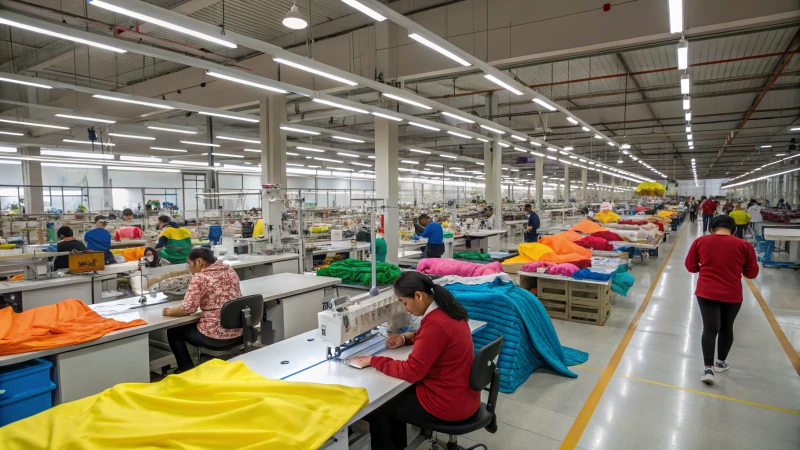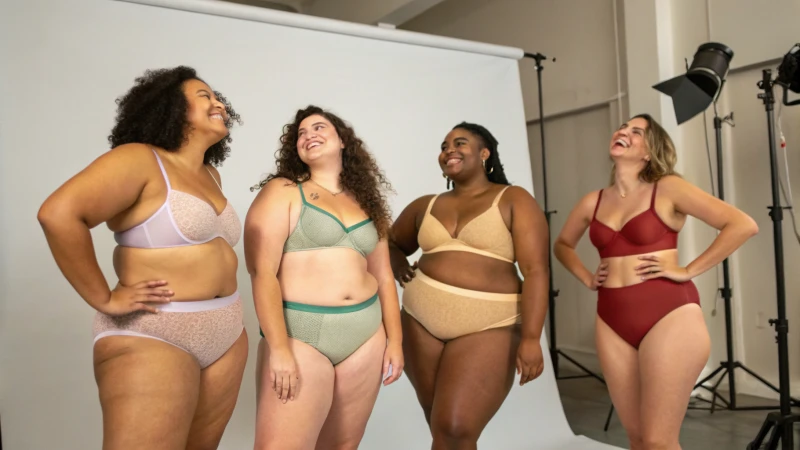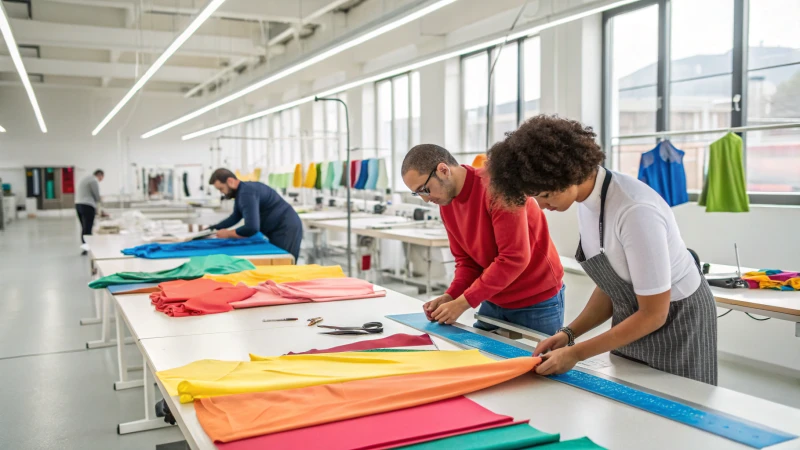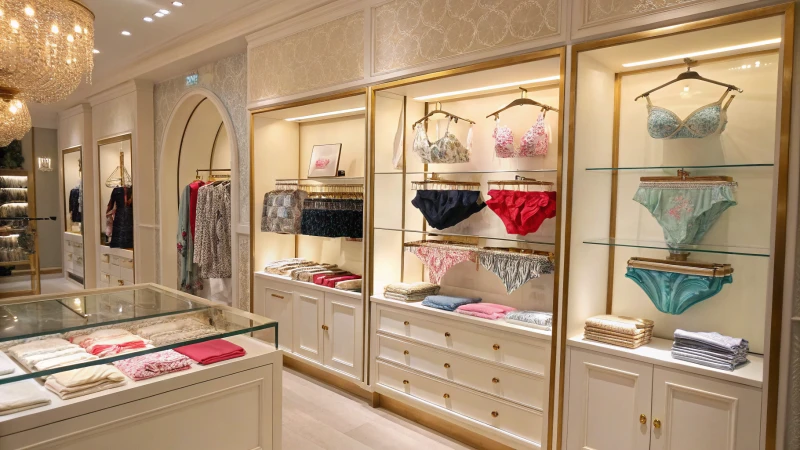
Choosing the right underwear can feel overwhelming with so many options out there. Cotton is a classic, but what if I told you there are other fabrics that could transform your comfort?
Underwear can be made from materials such as MicroModal, bamboo, Tencel, merino wool, nylon, polyester blends, silk, and spandex. Each offers distinct advantages like moisture-wicking, breathability, and softness, catering to various needs beyond traditional cotton.
While cotton has its perks, exploring alternative materials can enhance comfort and performance for different activities and climates. Read on to discover how these fabrics compare and why they might be the perfect fit for your next underwear purchase.
MicroModal is made from beechwood pulp.True
MicroModal is derived from beechwood pulp, known for its softness.
Why Choose MicroModal for Your Underwear?
MicroModal underwear offers a luxurious feel, exceptional breathability, and excellent moisture control, making it an ideal choice for everyday comfort.
MicroModal is a fabric known for its ultra-soft texture, high breathability, and moisture-wicking properties, making it an excellent choice for underwear. Its ability to maintain softness and shape after multiple washes adds to its appeal. As a sustainable option derived from beechwood pulp, MicroModal also aligns with eco-friendly values.

The Luxurious Feel of MicroModal
MicroModal stands out primarily due to its incredibly soft texture, often compared to silk. This softness is achieved through its fine fibers, which are smoother than those of cotton. For individuals seeking a touch of luxury in their everyday wear, MicroModal provides an unmatched experience.
Breathability and Moisture-Wicking Abilities
A key advantage of MicroModal is its breathability. The fabric allows air to circulate freely, keeping the skin cool and dry. Its moisture-wicking properties help absorb sweat quickly, making it ideal for hot climates or intense physical activities. Unlike some synthetic fabrics, it doesn’t trap heat or moisture, ensuring you stay comfortable throughout the day.
Durability and Shape Retention
Despite its delicate feel, MicroModal is surprisingly durable. The fabric maintains its shape well over time, resisting shrinkage and fading even after numerous washes. This long-lasting quality makes it a practical investment for your underwear collection.
Sustainability Factor
MicroModal is produced from beechwood pulp in a process that requires less water and energy compared to traditional cotton production. This environmentally friendly manufacturing aligns with the values of eco-conscious consumers. Choosing MicroModal means supporting sustainable practices without compromising on quality.
Comparison with Other Fabrics
| Feature | MicroModal | Cotton | Bamboo |
|---|---|---|---|
| Softness | Silky soft | Soft but less smooth | Soft and smooth |
| Breathability | Excellent | Good | Excellent |
| Moisture-Wicking | High | Moderate | High |
| Durability | High | Moderate | High |
| Sustainability | Eco-friendly | Water-intensive | Highly sustainable |
For more on how sustainable practices impact fabric choice1, explore articles on eco-friendly textiles.
MicroModal is less breathable than cotton.False
MicroModal has excellent breathability, superior to cotton.
MicroModal retains its shape after multiple washes.True
MicroModal resists shrinkage and fading, maintaining its shape.
Is Bamboo Underwear Truly Eco-Friendly?
Bamboo underwear is gaining popularity for its softness and sustainability claims, but how eco-friendly is it really?
Bamboo underwear is often marketed as eco-friendly due to bamboo's rapid growth and minimal pesticide use. However, the processing of bamboo into fabric can involve chemicals that may impact its overall sustainability. Consumers should consider the production process when evaluating its true eco-friendliness.

The Sustainability of Bamboo Cultivation
Bamboo grows exceptionally fast, often reaching maturity in three to five years. Unlike cotton, it requires no pesticides and very little water, making its cultivation highly sustainable. Additionally, bamboo plantations help absorb carbon dioxide and produce oxygen, contributing positively to the environment. These attributes make bamboo a promising raw material for sustainable fashion.
Processing Bamboo into Fabric
The eco-friendliness of bamboo underwear isn't solely dependent on the plant itself but also on how it's processed. Two primary methods are used: mechanical and chemical processing.
Mechanical Processing: This method involves crushing the woody parts of the bamboo and using natural enzymes to break down the fibers. The result is bamboo linen, a process similar to that used for hemp or flax. However, this method is less common due to its labor-intensive nature and higher costs.
Chemical Processing (Viscose): Most bamboo fabrics, like bamboo viscose or rayon, are produced through chemical processing. This involves dissolving the bamboo cellulose in a solvent to create a pulp, which is then spun into fibers. Unfortunately, some solvents can be harmful to the environment and workers if not handled properly. It's crucial to look for brands that employ closed-loop systems to minimize chemical waste.
Comparing Bamboo with Other Eco-Friendly Fabrics
While bamboo offers several environmental benefits at the cultivation stage, its processing can diminish these advantages. Let's compare it to other sustainable fabrics like Tencel2 and organic cotton3.
| Fabric | Water Usage | Pesticide Usage | Processing Environmental Impact |
|---|---|---|---|
| Bamboo | Low | None | High (unless closed-loop) |
| Tencel | Low | None | Low (closed-loop) |
| Organic Cotton | Moderate | None | Low |
What to Look for When Buying Bamboo Underwear
To ensure your bamboo underwear is as eco-friendly as possible, look for certifications such as OEKO-TEX or GOTS that verify sustainable processing practices. Additionally, consider brands that transparently discuss their supply chain and manufacturing processes. Investigate if they use closed-loop systems for chemical management to minimize environmental impact. Look for consumer reviews or reach out to companies directly for more information about their practices.
Ultimately, while bamboo underwear can be an eco-friendly choice, it's essential to be informed about the manufacturing processes4 involved to make truly sustainable decisions.
Bamboo grows faster than cotton.True
Bamboo matures in 3-5 years, while cotton takes longer to grow.
All bamboo fabrics use mechanical processing.False
Most bamboo fabrics use chemical processing, not mechanical.
How Does Merino Wool Compare in Warm and Cool Climates?
Merino wool is not just for winter wear; it's a versatile fabric that's effective in both warm and cool climates.
Merino wool excels in temperature regulation, offering warmth in cold weather and cooling comfort in heat due to its breathability and moisture-wicking properties.
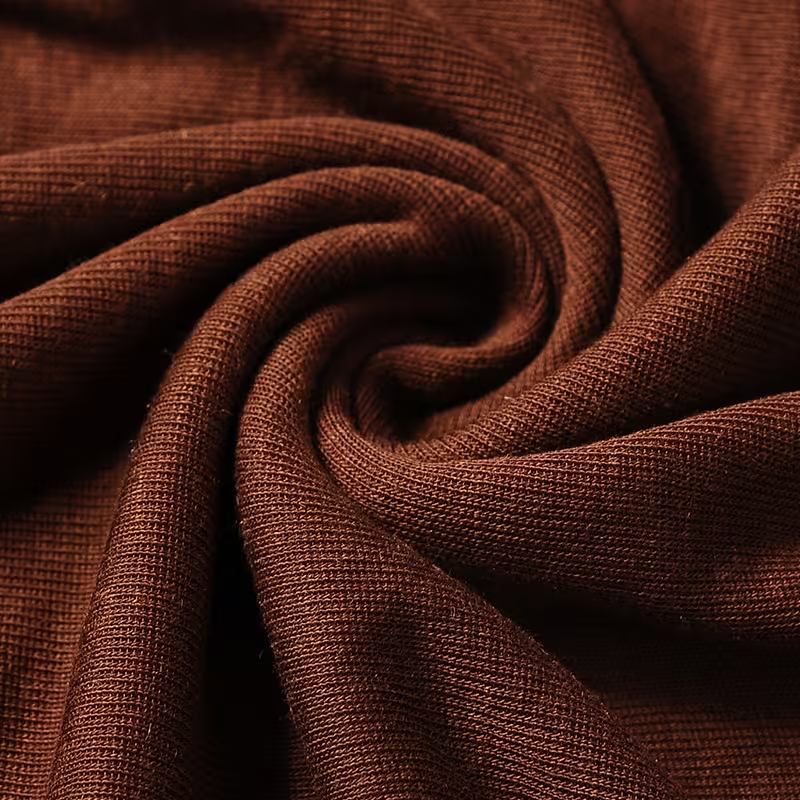
Understanding Merino Wool's Versatility
Merino wool's unique structure makes it incredibly adaptable, providing comfort across a range of temperatures. Its fibers are finer than those of regular wool, which gives it a soft touch and enhances its ability to trap air, providing insulation during cold weather.
In warm climates, merino wool's breathability allows heat and moisture to escape, keeping you cool. The fibers can absorb moisture up to 30% of their weight without feeling wet, effectively managing sweat and reducing odor, making it an ideal choice for outdoor activities5 in various climates.
Temperature Regulation Properties
| Feature | Cold Climates | Warm Climates |
|---|---|---|
| Insulation | Traps heat, keeping the body warm | Allows heat to escape, preventing overheating |
| Moisture Management | Absorbs and evaporates sweat, maintaining warmth | Wicks moisture away, keeping skin dry and cool |
| Odor Resistance | Natural antibacterial properties reduce odor buildup | Same properties help maintain freshness longer |
Practical Applications of Merino Wool
For those interested in sustainable fashion, merino wool is a renewable resource. Its temperature-regulating abilities make it suitable for diverse applications, from winter hiking6 apparel to summer casual wear.
Merino wool's durability ensures long-lasting garments that can be worn year-round. Consider it for activities like hiking, skiing, or simply lounging at home. With its natural UV resistance, it also offers protection against the sun, making it a versatile addition to any wardrobe.
Merino wool is only suitable for cold climates.False
Merino wool regulates temperature, making it ideal for all climates.
Merino wool can absorb 30% of its weight in moisture.True
Its fibers can absorb moisture without feeling wet, aiding comfort.
Are Polyester Blends Suitable for Everyday Wear?
Polyester blends have gained popularity for everyday wear, but are they really suitable for all-day comfort? Let's explore!
Polyester blends offer durability, moisture-wicking, and quick-drying properties, making them ideal for active lifestyles. However, they may not provide the same breathability or softness as natural fibers, which can affect comfort during prolonged wear.

Benefits of Polyester Blends
Polyester blends are known for their durability and resistance to wrinkles and shrinking. These characteristics make them an excellent choice for activewear and sportswear7, where longevity and performance are key. Additionally, the moisture-wicking ability of polyester helps keep sweat at bay, ensuring you stay dry during intense activities.
Comparing Comfort and Breathability
While polyester blends excel in certain aspects, they can fall short in terms of breathability when compared to natural fibers like cotton or bamboo. This can be particularly noticeable in hot climates or during extended periods of wear. However, innovations in fabric technology have led to the development of breathable polyester blends that incorporate mesh panels or other design features to enhance airflow.
| Material | Durability | Moisture-Wicking | Breathability |
|---|---|---|---|
| Polyester Blends | High | Excellent | Moderate |
| Cotton | Moderate | Low | High |
| Bamboo | Moderate | High | High |
Versatility and Style
Polyester blends are versatile, available in various styles from casual to formal wear. Their ability to hold colors well ensures vibrant garments that don't fade easily. This makes them a popular choice for work attire and fashion-forward outfits. However, some may find polyester blends less soft than natural fabrics like silk or MicroModal.
Practical Considerations
For those with sensitive skin, some polyester blends might cause irritation due to the synthetic nature of the fabric. It's important to test wear different blends and look for those labeled hypoallergenic or blended with softer fibers like cotton or Tencel. This ensures comfort without sacrificing performance.
Overall, the suitability of polyester blends for everyday wear largely depends on individual preferences and lifestyle needs. While they offer numerous advantages, considering factors like breathability, skin sensitivity, and environmental impact is essential when making your choice.
Polyester blends are more breathable than cotton.False
Cotton is generally more breathable than polyester blends.
Polyester blends are wrinkle-resistant and durable.True
Polyester blends resist wrinkles and maintain durability, ideal for activewear.
Conclusion
Exploring different materials for underwear can elevate your comfort and performance. Consider trying a new fabric to experience unique benefits that suit your lifestyle.
Discover the environmental benefits of choosing sustainable textiles.: 1) Material selection. Sustainable textiles start with sustainable materials. · 2) Eco-design · 3) Eco-friendly alternatives to traditional production · 4) ... ↩
Learn why Tencel is a sustainable fabric option.: Fabrics made with TENCEL™ Lyocell and Modal fibers are sourced from responsibly managed forests and manufactured with resource efficient production methods. ↩
Discover why organic cotton is a greener choice.: Organic cotton is sustainable cotton grown without the use of synthetic pesticides, artificial fertilizer and other toxic chemicals. ↩
Understand how closed-loop systems reduce environmental impact.: A closed-loop system is a design and manufacturing method that keeps the textile material circulating for as long as possible. ↩
Discover why merino wool is perfect for hiking and other adventures.: 150 gm Merino wool garments are ideal for summer activities where breathability, sun protection and moisture management are important. Unlike synthetic clothing ... ↩
Learn how merino wool enhances warmth and comfort during hikes.: Merino wool socks are a game-changer for hikers, providing unmatched comfort, temperature regulation, and odor resistance. ↩
Learn how polyester blends enhance activewear durability and performance.: Polyester fabric is not only durable but also retains its shape well, ensuring that garments look new even after multiple washes. Because polyester is resistant ... ↩


